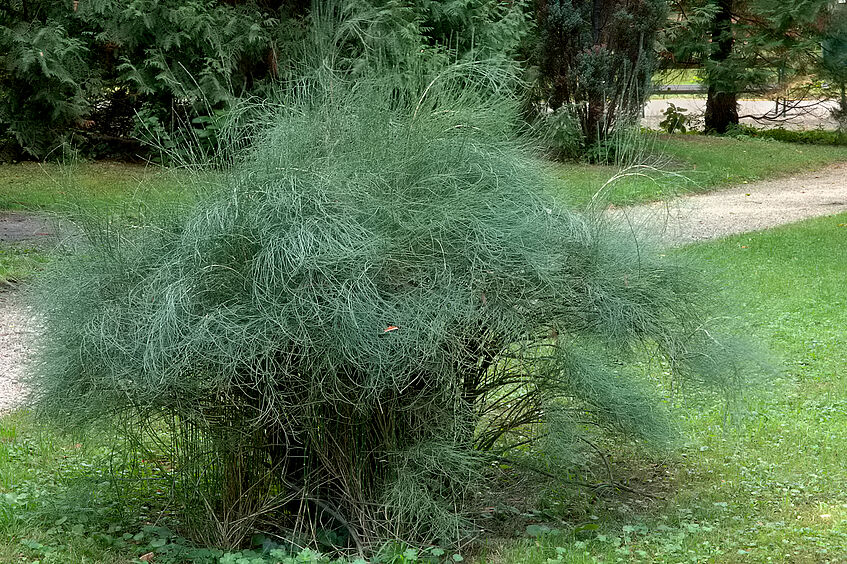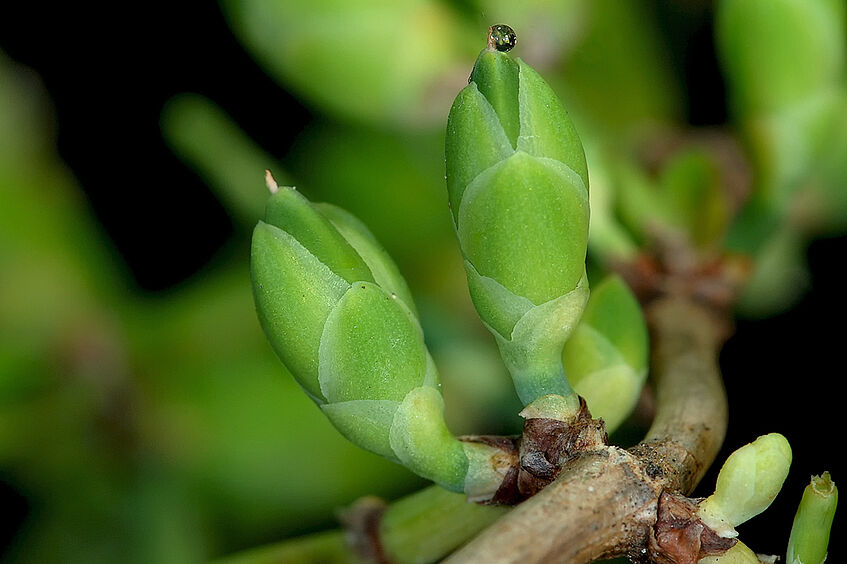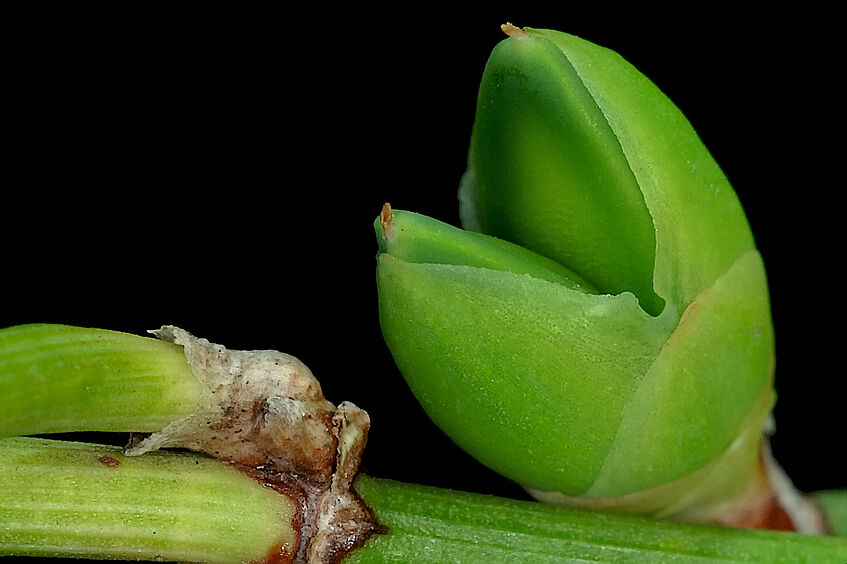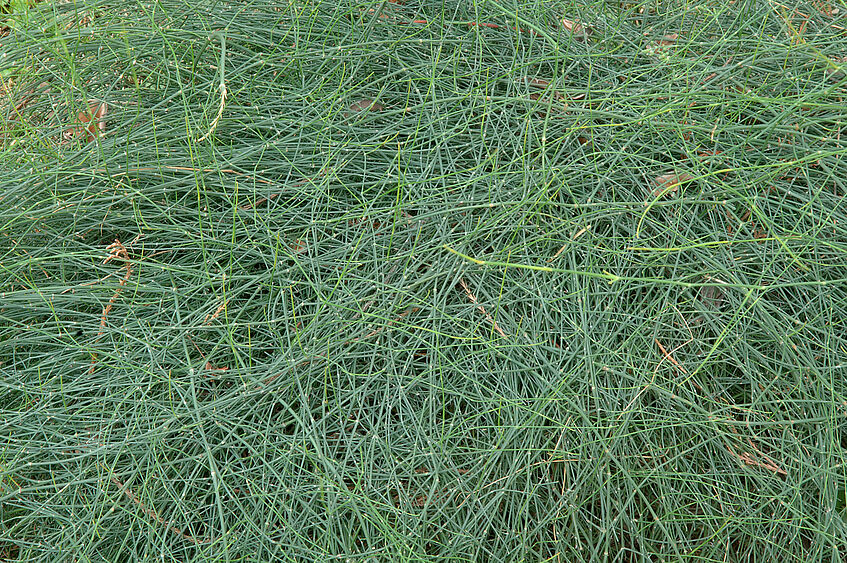Ephedra – Joint-pine

Ephedra © BGUW_R. Hromniak

Ephedra © BGUW_R. Hromniak

Ephedra © BGUW_R. Hromniak

Ephedra © BGUW_R. Hromniak
Location in the garden: areas 22, 23
The genus Ephedra is remotely related to the conifers. Ephedras are gymnosperms. From their habit, they belong to the "switch plants". Sometimes they climb up other trees or shrubs. The leaves of this rather inconspicuous plant grow in opposing directions and are reduced to scaly structures of 2-3 mm size. The branches are delicately grooved and structured like horsetails, so pulling on the branches breaks off single elements of the stalk. The plants naturally propagate through creeping rhizomes. They are reproductively dioecious, i.e., there are separate male and female plants. Seeds are bright red on most species and quite decorative.
The genus is claimed to be taxonomically rather complicated, and correct species determination is only possible based on flowers and seeds.
Since 2007 there has been a new planting of Ephedra species in display area 22. This display shows E. andina (from the Andes of South America), E. distachya (Europe to Siberia), the subspecies E. distachya ssp. helvetica (whose taxonomic status is not yet generally accepted), and another plant of this genus that cannot yet be identified. A separate plant in area 23 does not produce seeds and, therefore, can also not be named.
Europe is home to four of the 40 different Ephedra species worldwide. Typical habitats are deserts or steppes in warmer climate zones with little precipitation. The overall appearance of Ephedra plants indicates adaptation to localities with reduced water supply.
No species is known to occur in Austria, but E. distachya does occur as close as Southern Tyrolia, where it grows in extremely hot sites in rocky habitats.
For garden cultivation only E. distachya (previously named E. vulgaris) is frequently offered for general sale. It bears bright red, roughly pea-sized seeds and can be used as a container plant or even as a green covering for rooftops.
